This is a tale of a journey both physical and metaphorical, in the footsteps of my great-grandparents, through the Chin State in western Myanmar. What began as a plan to follow the pages of Laura Hardin Carson’s memoirs to find the grave of my great-grandfather ended up as a week-long tour of Baptist churches, congregation halls, reception lines, banquets and speeches. Accompanied by my sister Susan Carson, her husband Todd Boley and old friend Jim McCullough, I received much more than I bargained for. Not only did we find the burial place of Arthur Carson–died 1908 48 years old in Hakha–but also a huge legacy of their missionary work among the Chin Hill tribes of Burma.
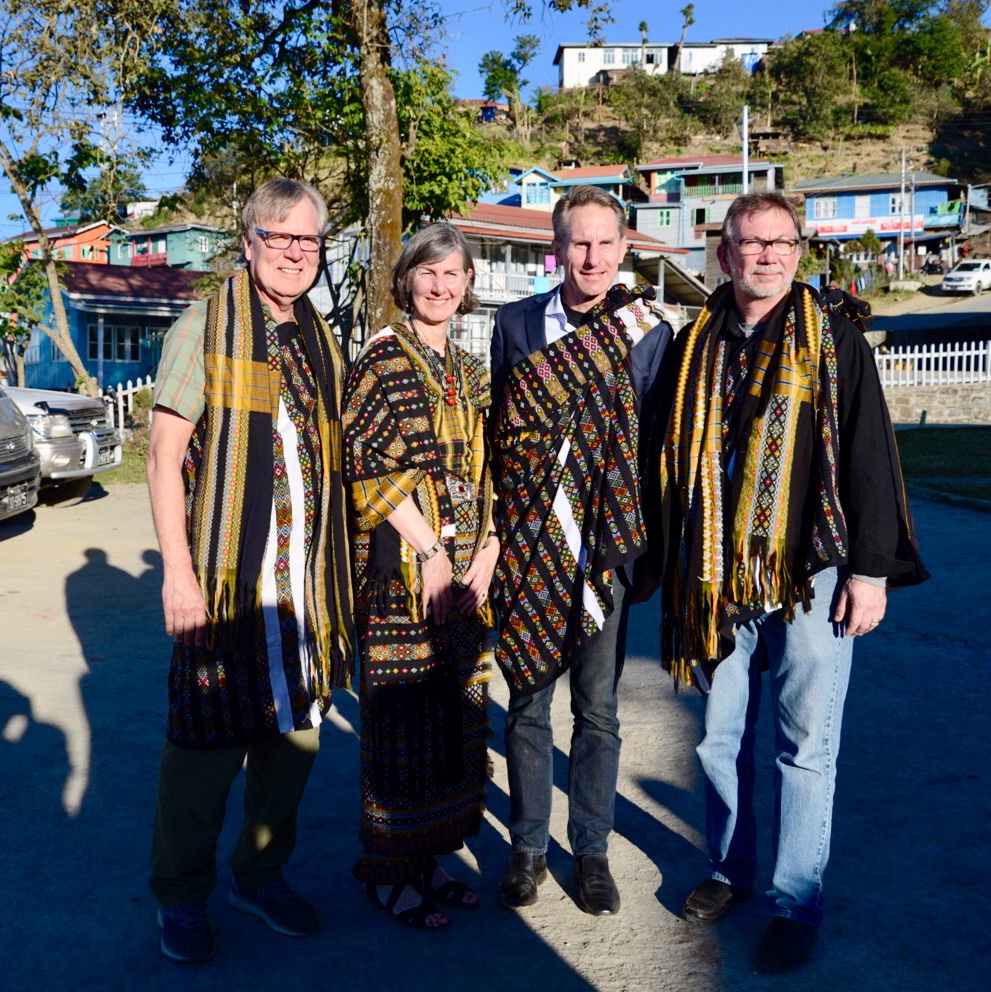
In 1883, a 25 year-old woman from Nebraska took a train to New York City, in order to board a steamship to Glasgow. She left her fiancé behind in the US midwest to finish his studies. From Glasgow it was yet another train to Liverpool and a further ship bound for Rangoon, stopping in Malta and traversing the Suez Canal along the way. It was the beginning of thirty-eight years of Baptist missionary work in the British colony of Burma. Three years later she was joined by her partner and was married in Bassein. They were my great-grandparents, Arthur and Laura Carson. My grandfather Carl and his brother Max were born in Burma, and Arthur buried there, at Hakha in the Chin Hills.
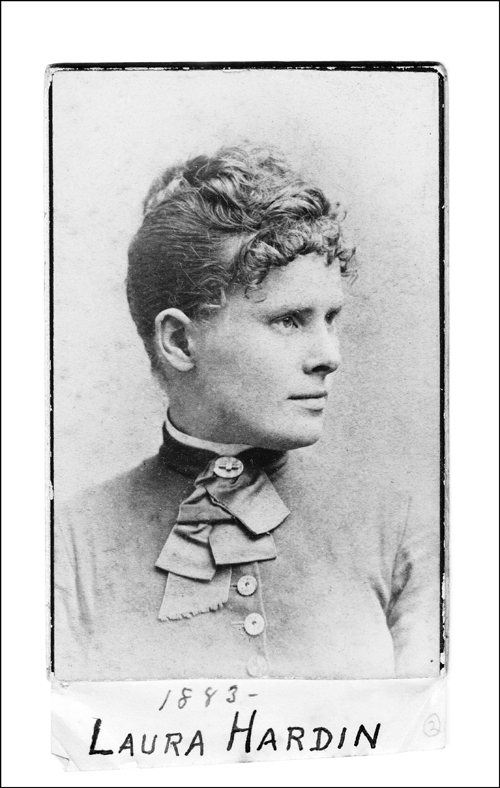
Years later, as I was growing up in a Northern California suburb, family reunions meant dinners of rice with lamb curry topped with chopped bits of apple, banana, peanuts, coconut and mango chutney. Another piece of our exotic family history was Laura Hardin Carson’s book describing her adventures growing up in mid 19th century Nebraska, featuring native Americans, prairie fires, Winter blizzards, father off fighting in the Civil War, and religious choices leading to seminary and ultimately to a missionary life in Burma.
At first reading, while I was in my teens, her writing was too melodramatic for my taste. A second pass, in my thirties, left me affronted at her presumption that Christianity was superior to the beliefs it slowly replaced. The third try, in my fifties now, brought a sense of wonder in their energy and perseverance building schools, spreading literacy and bringing healthcare along with their religion.
For many years I held a vague ambition to travel to Burma, now called Myanmar, and find my way up into the Chin Hills, to Hakha, to see if any signs of my ancestors remained. For many years this was more a daydream than anything else. In 1962 Ne Win and a cadre of army officers took over the country in a coup, and essentially isolated it from the outside world. The autocratic government was ethnically and culturally Burman and Buddhist. Ethnic and religious minorites did not fair well and, for foreigners, travel to many places in Myanmar was restricted or prohibited. Only recently has the situation improved enough to make a trip viable. And suddenly, I received an e-mail from David Cung Bik Ling, a Chin living in exile in Geneva for many years. He had come across photos of Arthur and Laura on my family website, and wanted to know whether I was one of their descendants. David put me in contact with Rev. Hla Aung, Executive Secretary of the Global Chin Christian Federation, and Dr. Lian H. Sakhong, Vice Chairman of the Chin National Front and author of In Search of Chin Identity.
Rev. Hla Aung and the welcoming party at the airport: I arrive, flying from Stockholm through Bangkok and am met in the arrivals hall by a group of Chin church leaders including pastors from the Lai and Zotung Baptist Churches, and Rakhine State Chin Baptist Church. Next comes Jim, flying in from LAX through Taiwan. He was supposed to meet Susan and Todd in Taipei after their flight from SFO, but didn’t see them there. Their flight was delayed, so they missed the connection and wouldn’t arrive until later the same day after flying an additional leg through Bangkok. Bottom line: their journey from the US took around 24 hours, including delays, compared with the two months for Laura’s initial passage to Burma.
At this point we had only a vague conception of what was in store for us over the next 10 days or so. Hla Aung had warned us that we would be expected to speak at the New Year’s service at the Lai Baptist Church in Yangon. When queried, he responded that there would be perhaps a thousand congregants attending the service. In addition, we were to fly up to Kalay the next day, visit Carson Baptist Church and then drive up to Hakha the following day to start a round of visits there. After Hakha, there would be a drive south through Chin State with visits planned for Rezua, Matupi and Mindat.
New Year’s Day was a whirl of activity. Picked up at our hotel in a minivan and driven through the Yangon traffic to the church courtyard, shaking hands with a stream of people and no way to keep track of all the names, up the stairs to a meeting room and cups of tea. Smiles and questions, more introductions, first meeting with Lian H. Sakhong, with whom I had corresponded while preparing for the trip.
Hla Aung leads us into the church and to our seats on the dais. The service is in Lai with some welcoming words for us in English. When our time comes, I approach the lectern and adjust the mic up. Hla Aung stands by my side. I start to talk, referring to notes on my Ipad, and it takes a few lines before we settle into a rhythm, and I sense how much I can say before I must pause and let Hla Aung translate. We are on the threshold of our dream to visit Hakha and our great-grandfather’s grave. The Carson family unknown to the Chin Baptists—and the extent of the Chin Baptists, in Myanmar and the diaspora—unknown to us. A reunion of the two families. Then I am done and turn to introduce Susan, return to my seat.
Susan launches into her talk and we are all caught up in the emotion. My right brain is still struggling to tale it all in, while my left brain works on the puzzle I have been faced with these past weeks of preparation and travel. Why are they celebrating our visit? Over the next few days I began to understand as many people thanked us for coming and explained that through our attendance they could feel our great-grandparents’ presence. And so the adventure continues…
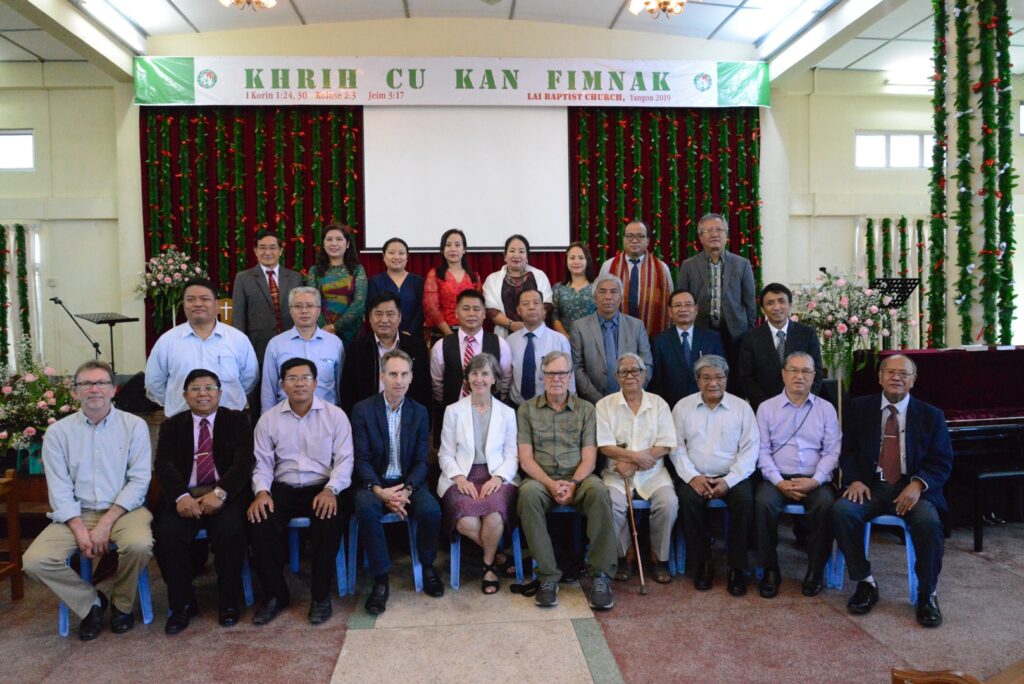
New Year’s Day 2019 Lai Baptist Church, Yangon 
Daw Sai Cer, Susan and Angela 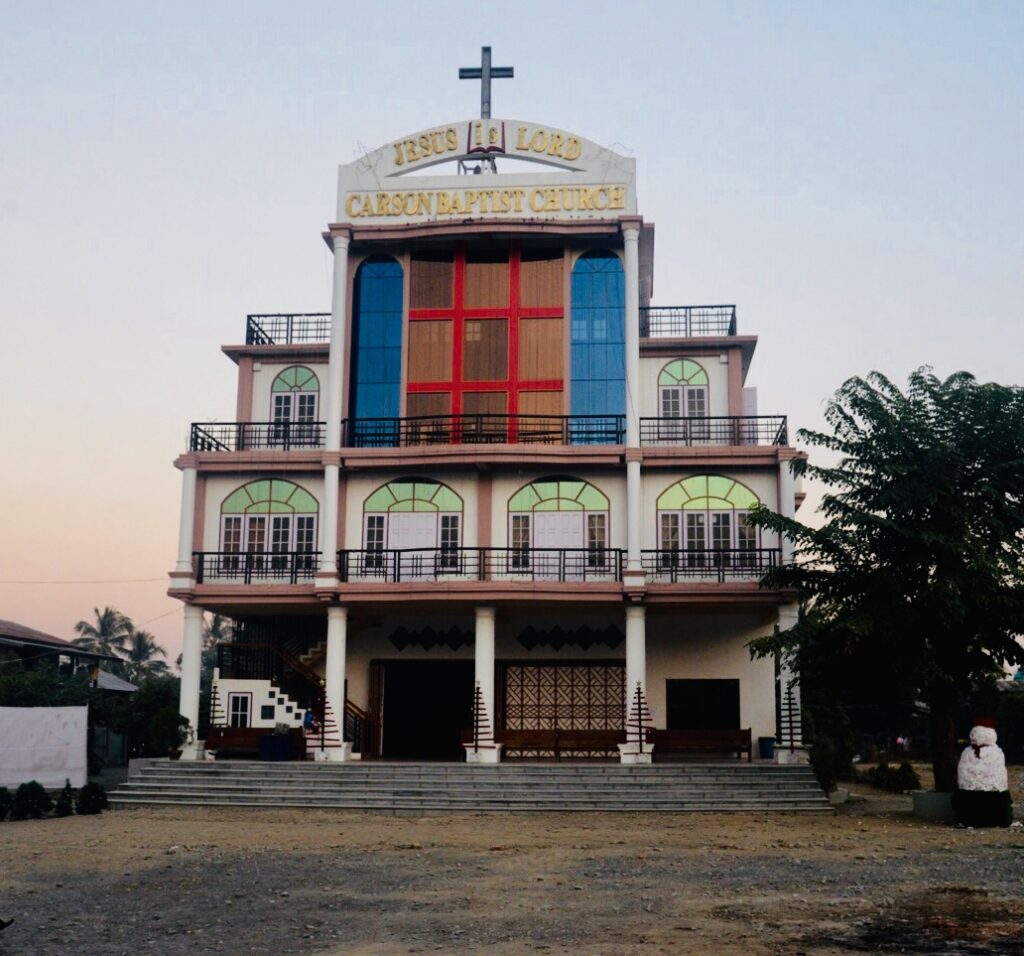
Carson Baptist Church in Kalay 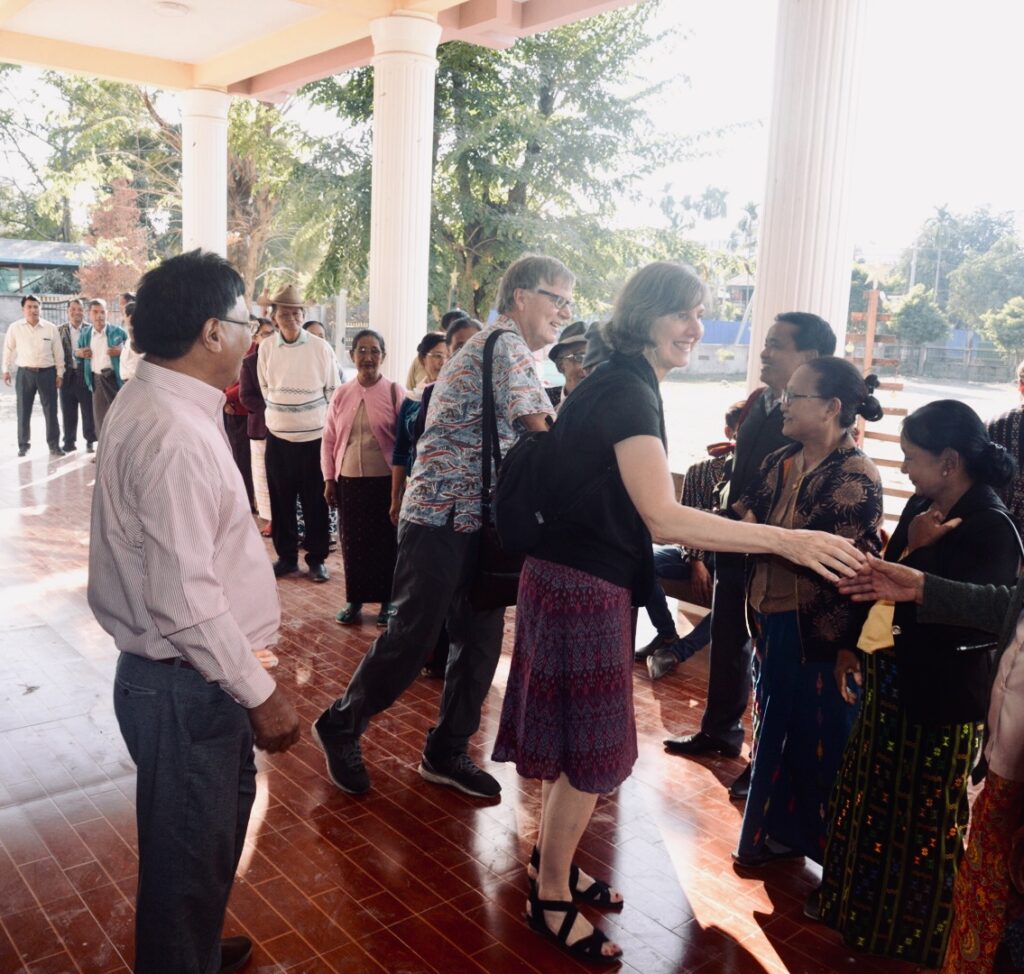
Warm reception in Kalay 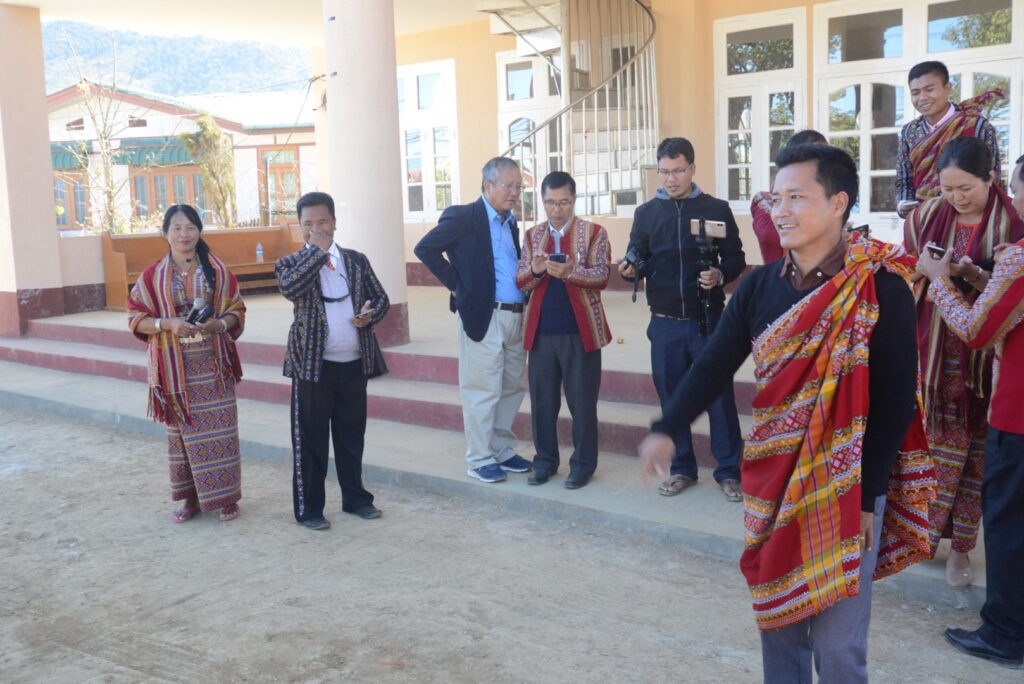
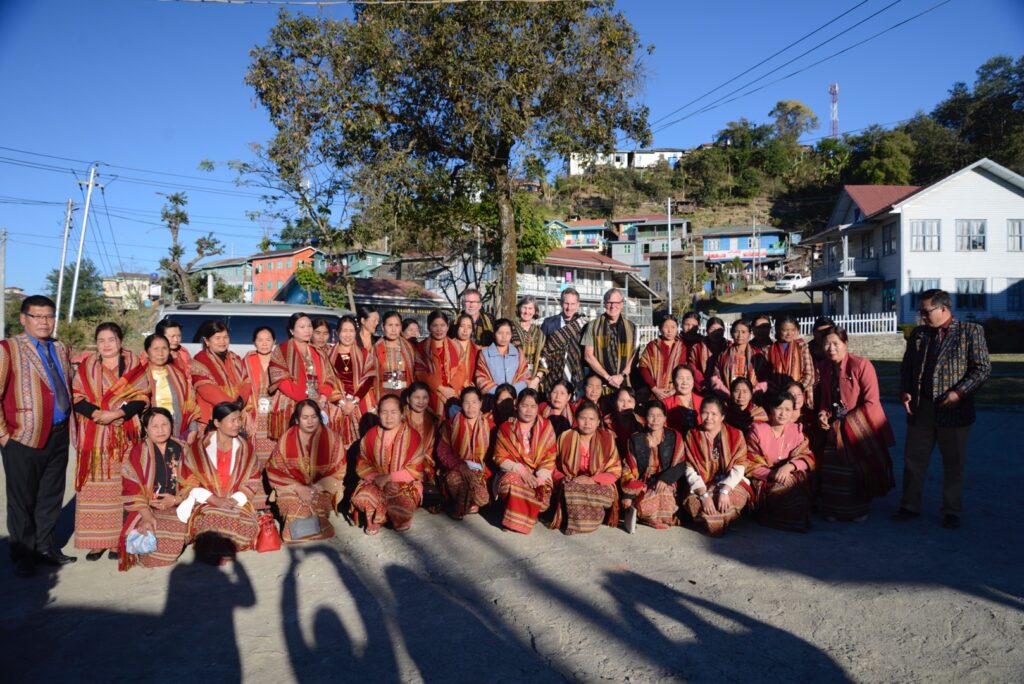
Welcome in Hakha 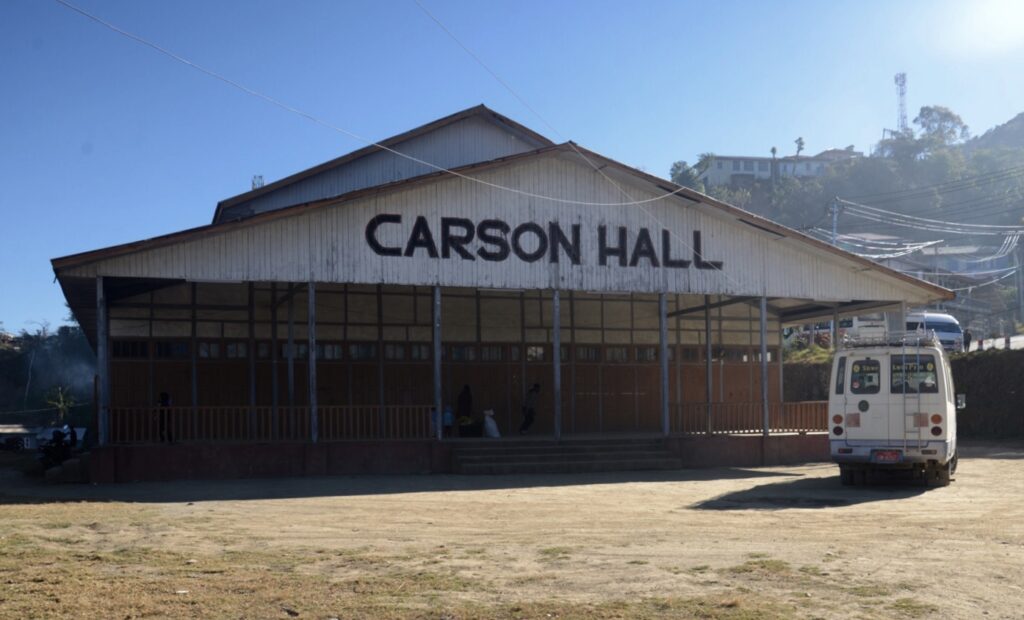
Baptist congregation hall in Hakha 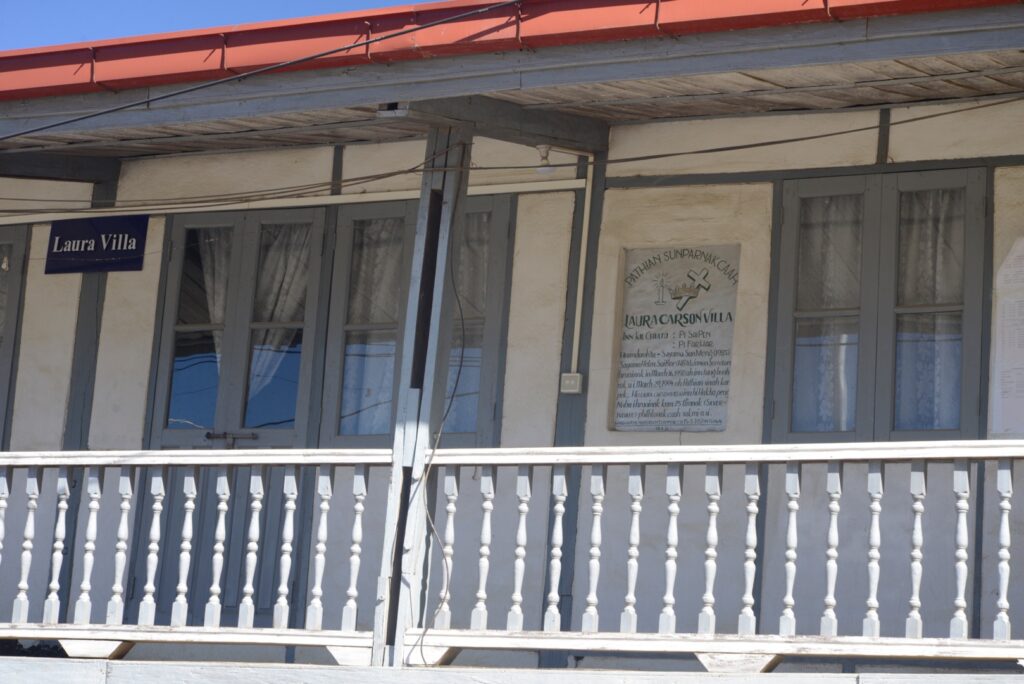
Laura Villa, our home in Hakha 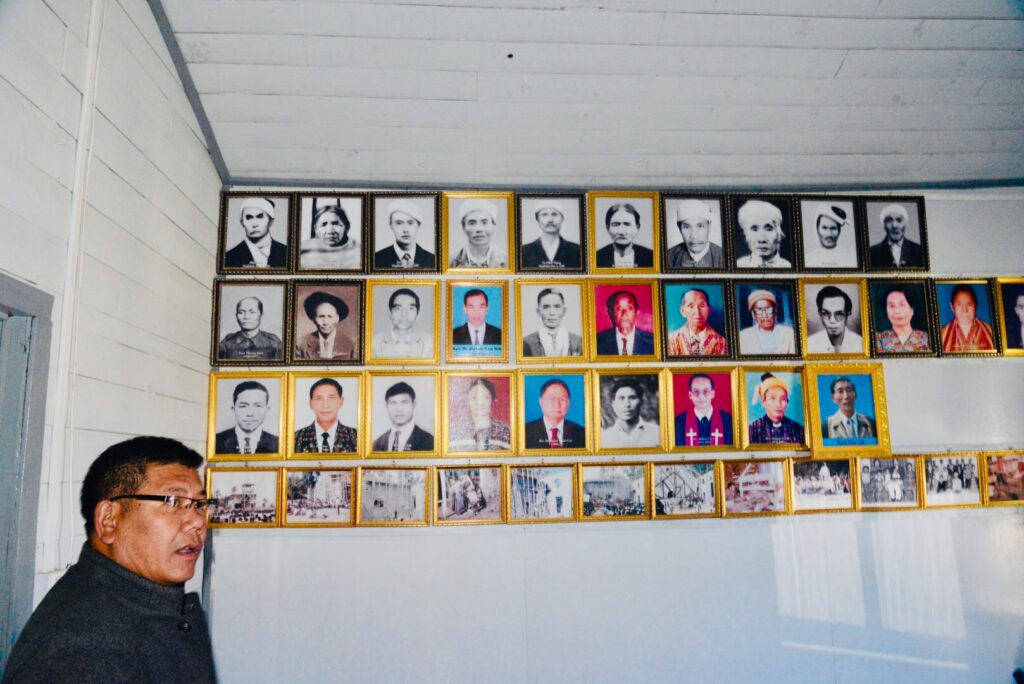
Rev. J. Nawl Cung Lian, General Secretary of the Hakha Baptist Association 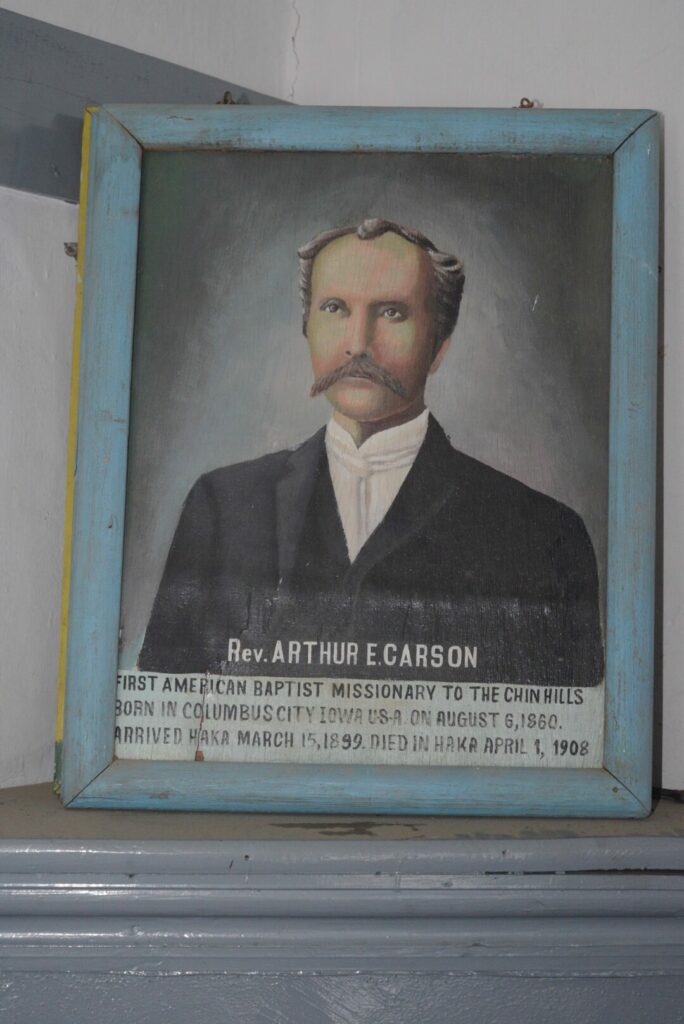
In the missionary museum, Hakha 
Arthur E. Carson, my great grandfather 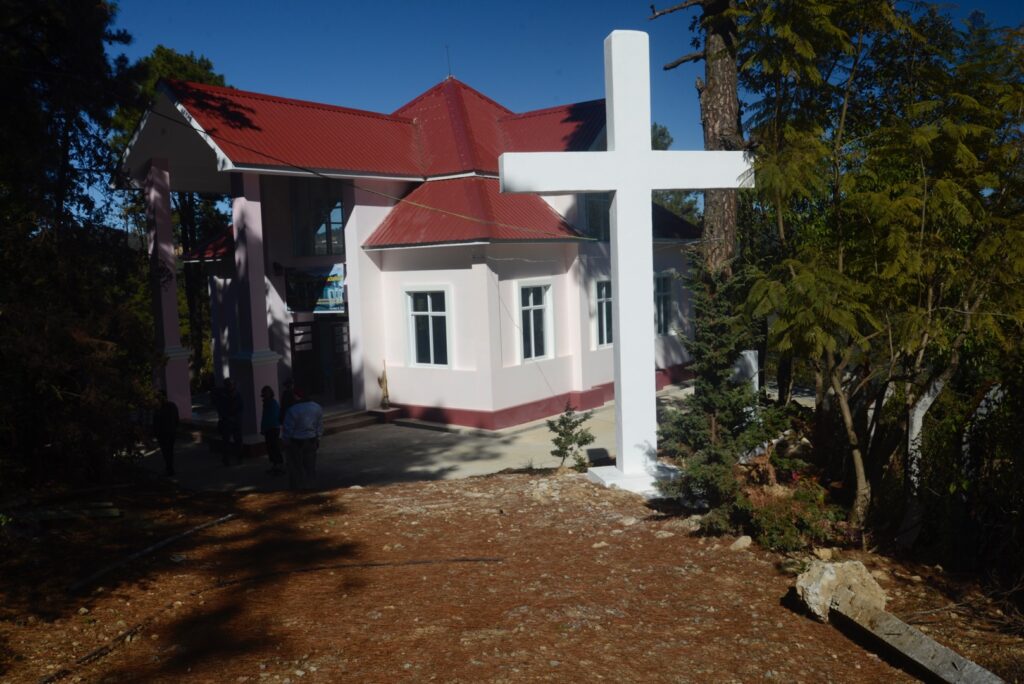
Missionary Mausoleum in Hakha 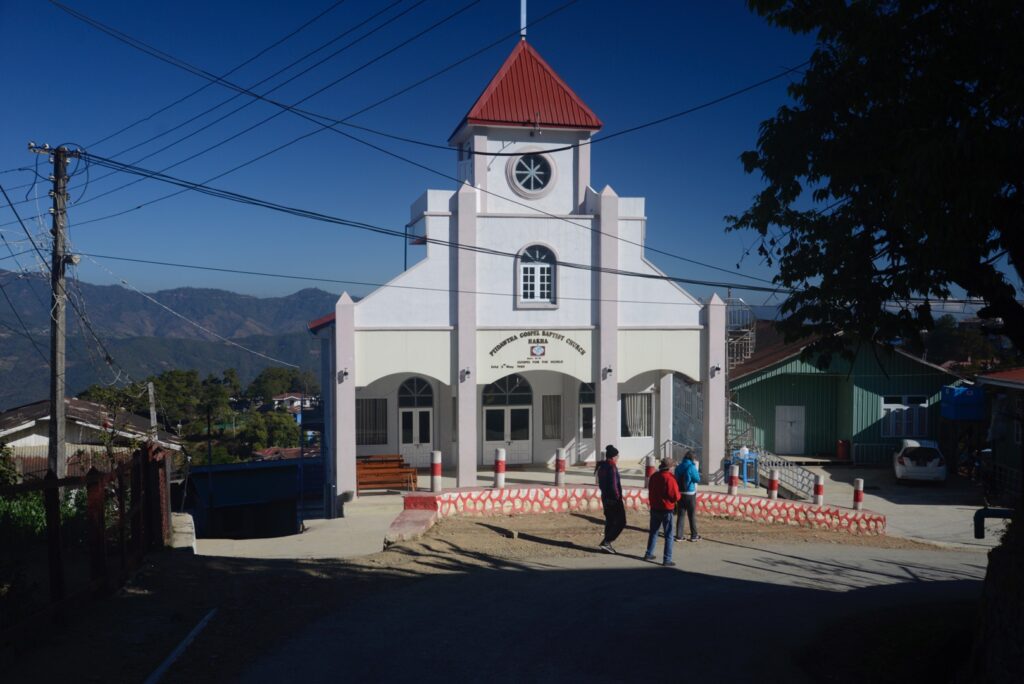
Pyidawtha Gospel Baptist Church in Hakha 
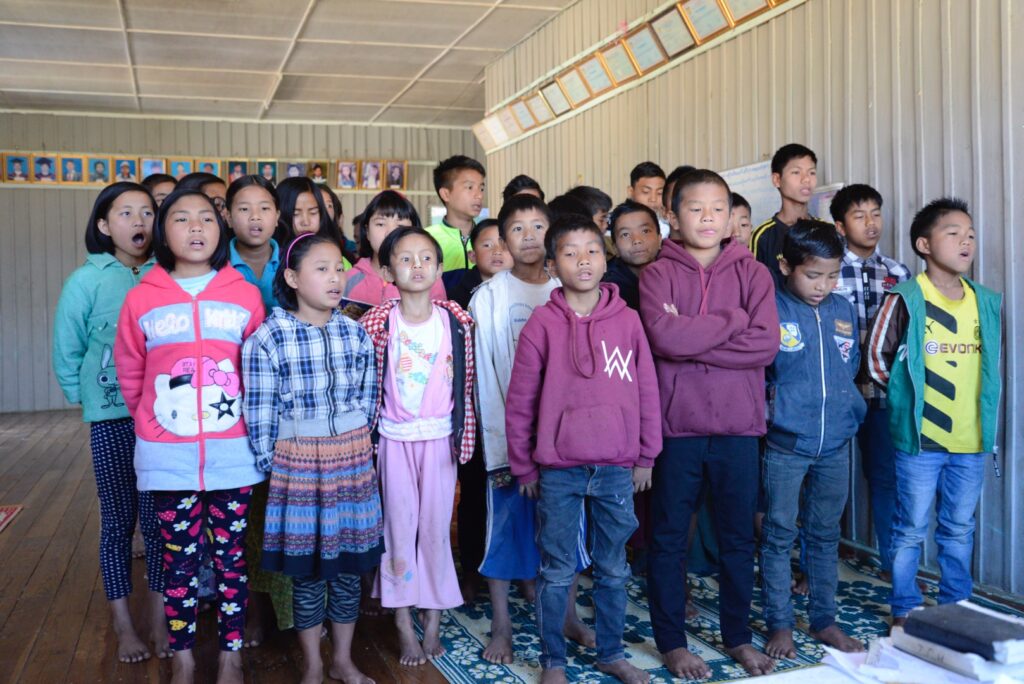
Zion Children Home, Hakha 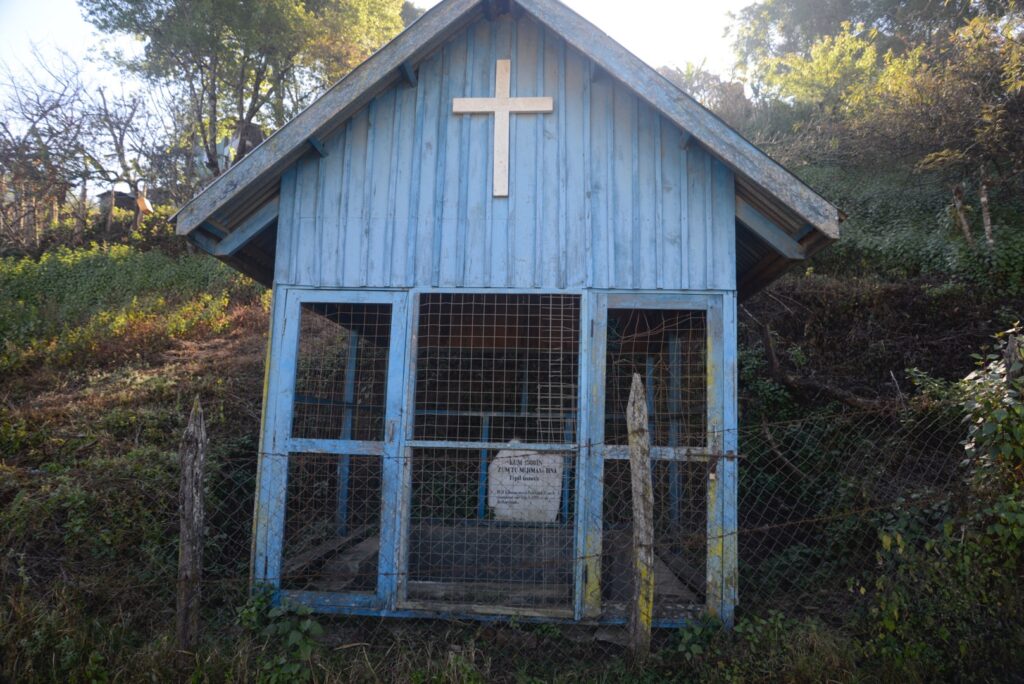
The first baptismal in Hakha 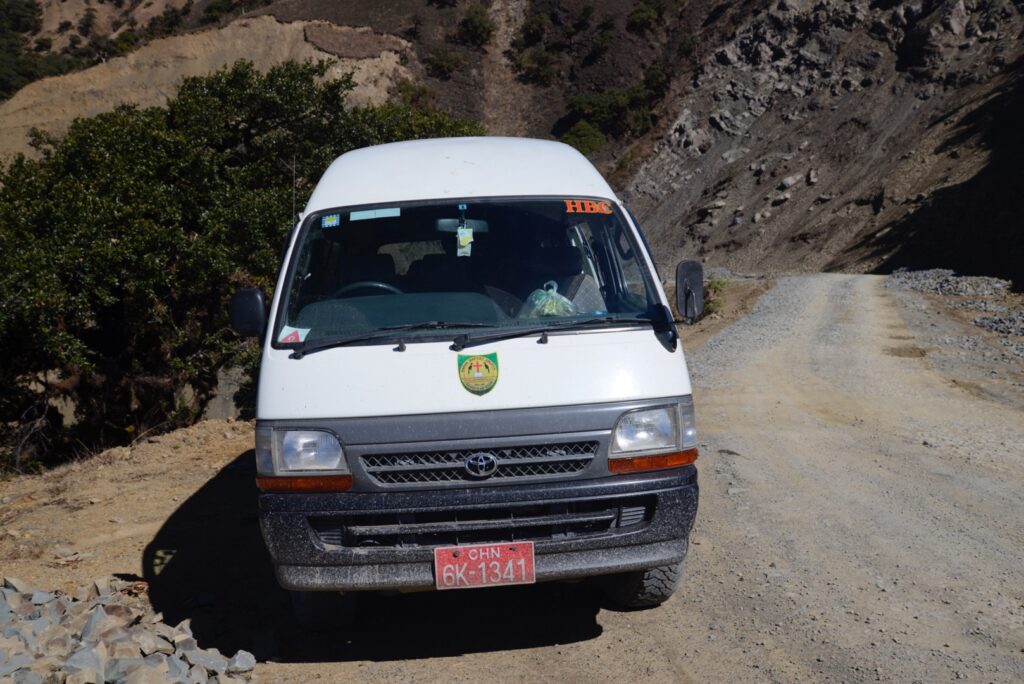
Our transport in the Chin Hills 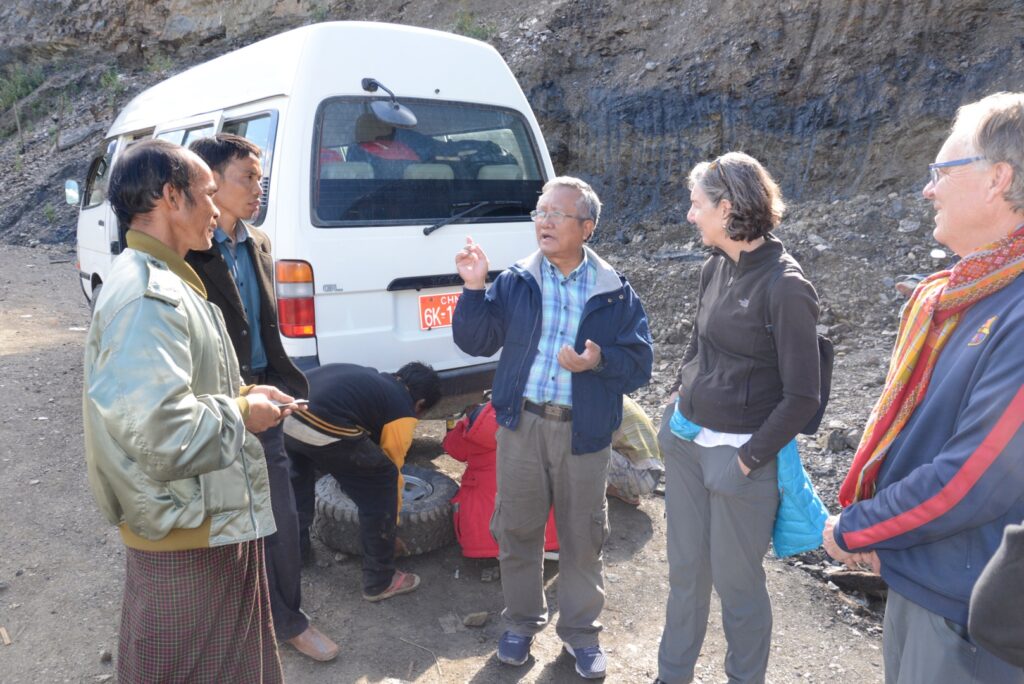
Minibus repairs in Rezua 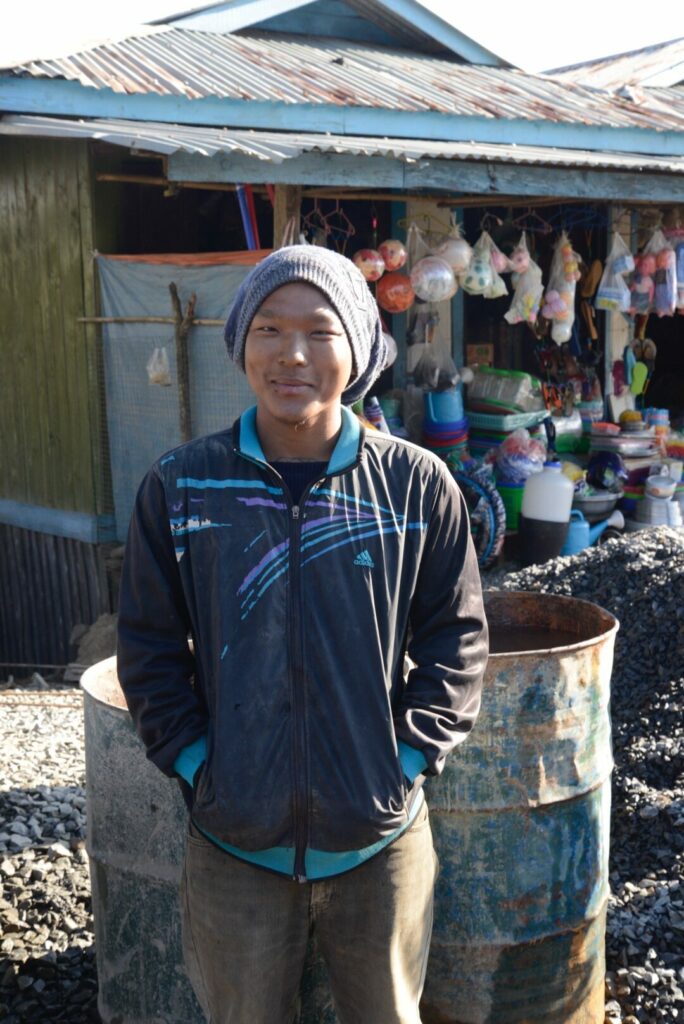
Raised in Texas, now back in the old country 
Mistrustful in Rezua 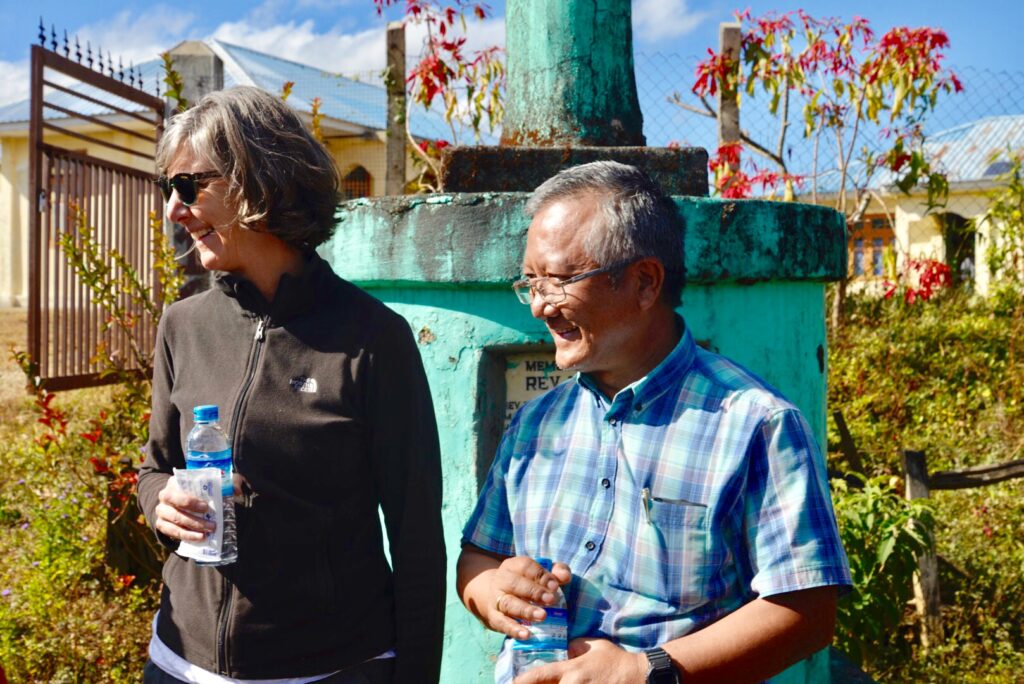
Rev Hla Aung with Susan 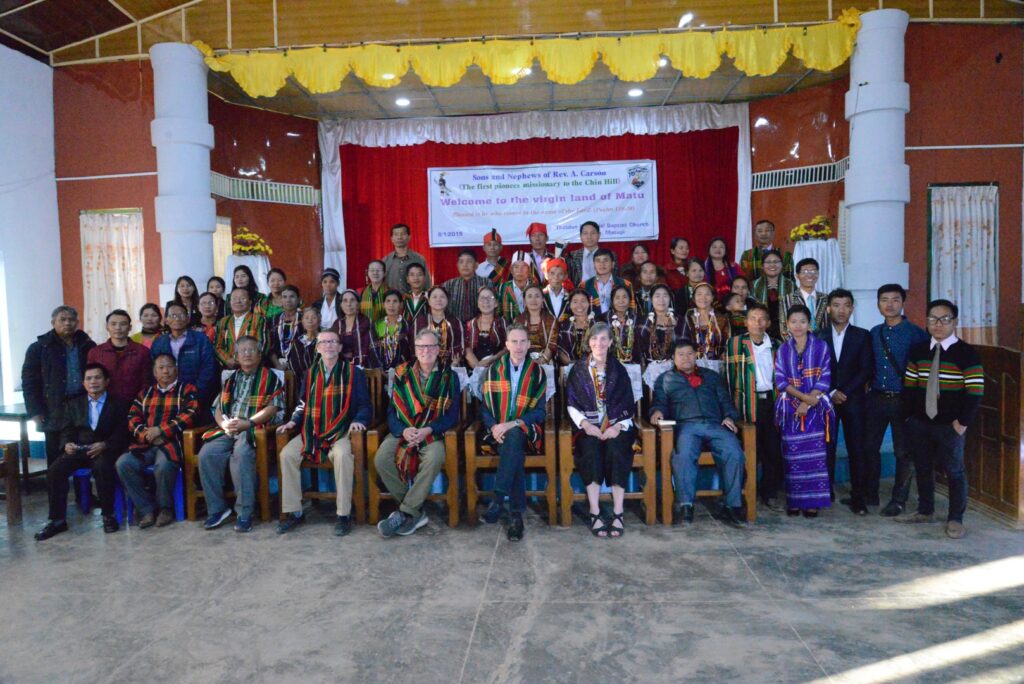
Matupi 
Matupi welcome 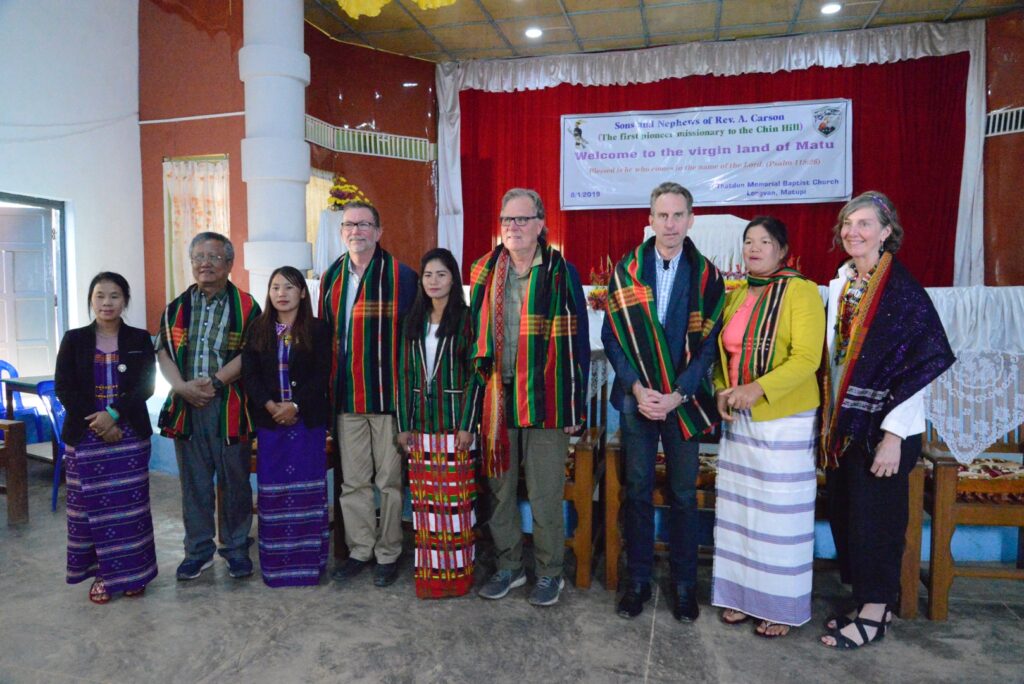
Reception in Matupi 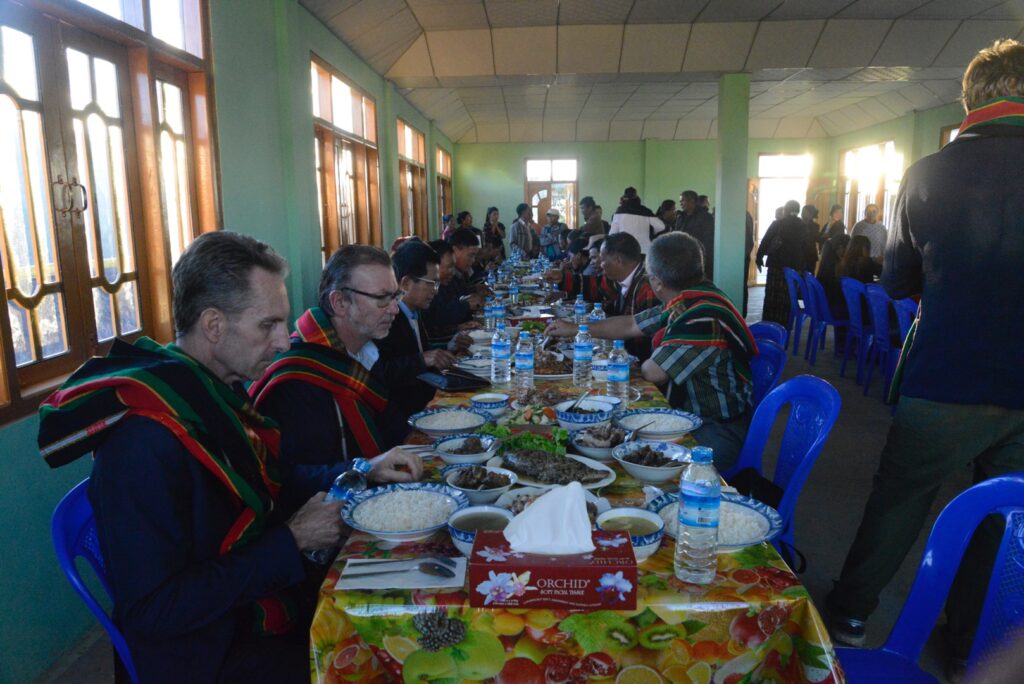
Banquet in Matupi 

Associate Pastor Mary Saw in Matupi 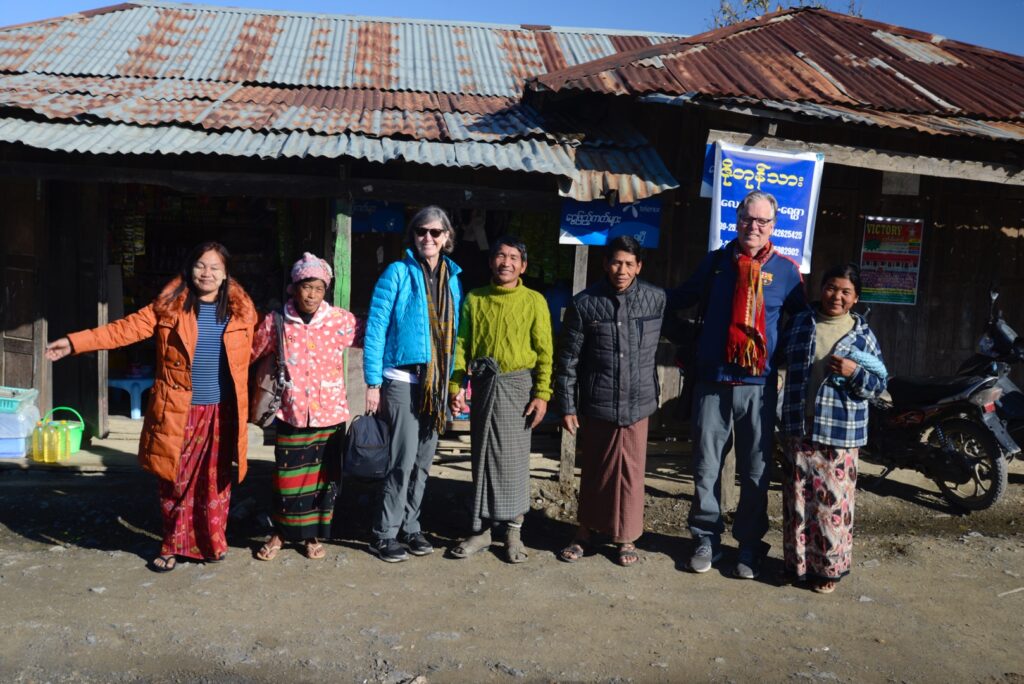
Lunch stop 
Chin Hills 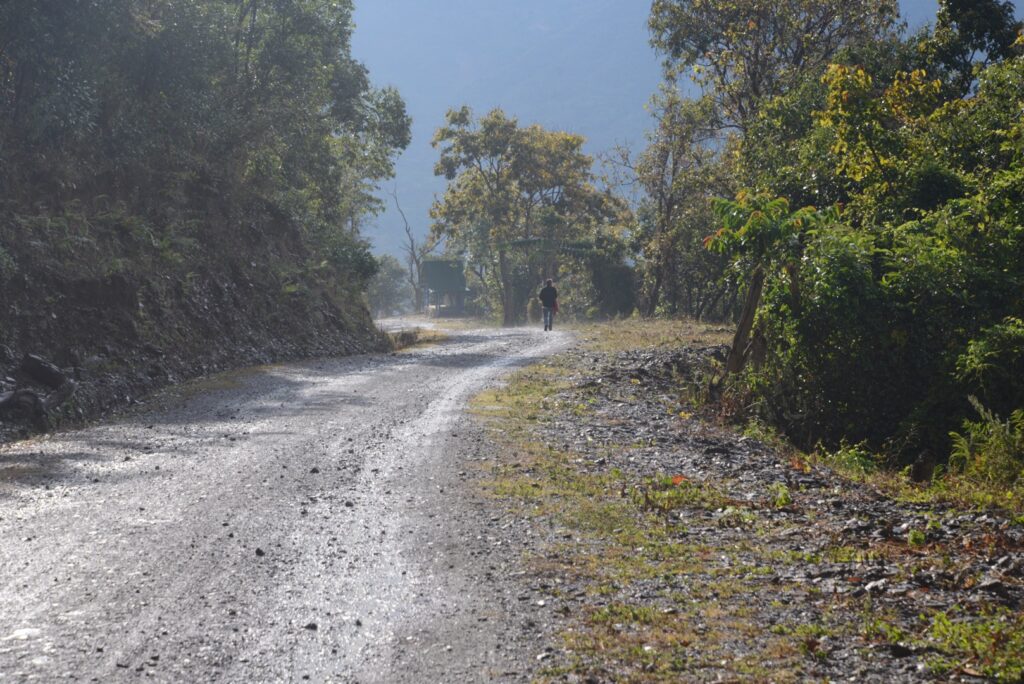
On the road again
